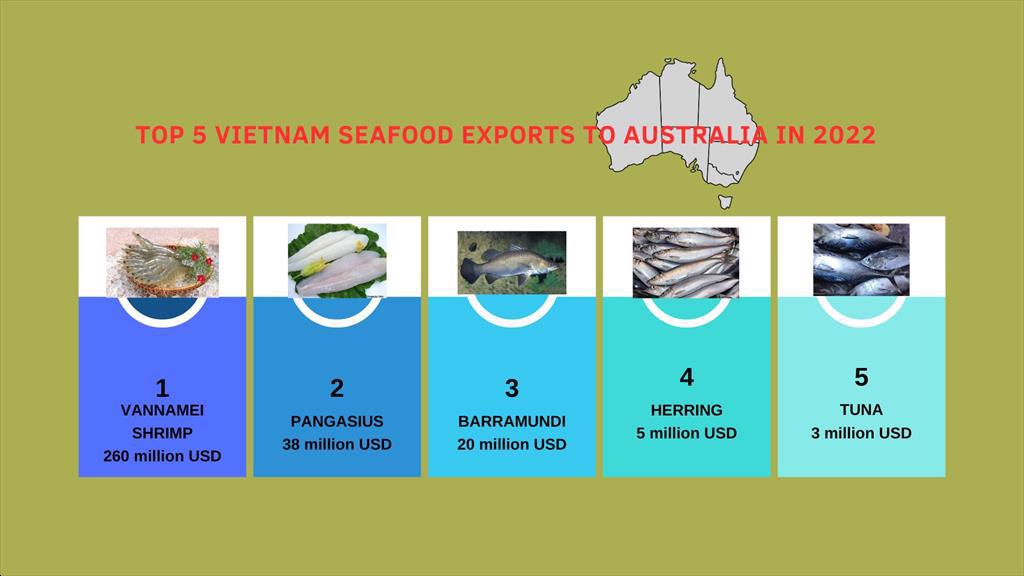Australia used to be Vietnam's 9th largest seafood import market in 2018. The CPTPP agreement came into force in 2019. After 4 years, by 2022, Australia has become the 6th largest single market for Vietnamese seafood.
From 2018 to 2022, in the top 6 import markets, only Australia has continuously increased seafood import turnover from Vietnam. From 197 million USD in 2018 seafood exports to Australia increased by 85% to 365 million USD in 2022. The proportion of the Australian market therefore also increased from 2.2% to 3.3% of Vietnam's total seafood exports.
The opening of the Australian market together with tariff incentives from the CPTPP free trade agreement has brought about an opportunity to increase Vietnam's seafood exports to Australia in recent years.
Breaking through and accounting for the largest proportion of products exported to Australia after 4 years is vannamei shrimp. In 2022, the export of this product to Australia reached 259.5 million USD, up 171% compared to 112 million USD in 2018, before the CPTPP agreement took effect.
Shrimp revenue accounted for 71% of Vietnam's seafood export value to Australia in 2022, compared to 49% in 2018.In contrast, pangasius exports to Australia decreased from 24% to 10%. From 2018 - 2022, Vietnam's pangasius exports to Australia decreased by 18%, from $47 million to $38 million.
Among the top 3 seafood products exported to Australia, barramundi accounts for 6% of export sales with a value of nearly 21 million USD in 2022. Vietnam's barramundi exports are mainly farmed products of Australis company in Vietnam.
Vietnam is holding the No. 1 position in the Australian seafood market, accounting for 23% of Austria's seafood imports in 2022. This proportion is much higher than 13% of 5 years ago, showing a strong breakthrough of Vietnam's seafood products in Australia, thanks to the good trade cooperation relationship and FTA agreements with Australia, including AANZFTA, CPTPP and RCEP.
Especially, after the CPTPP agreement came to effect, seafood products such as shrimp, pangasius and marine products imported from Vietnam into Australia has enjoyed a tax rate of 0%.

In the first quarter of 2023, Vietnam's seafood exports to Australia reached 63 million USD, down 32% over the same period last year. In which, whiteleg shrimp exports decreased by 34%, pangasius exports decreased by 26%, seabass decreased by 34%...
In the context of 2023, the Australian market is also not immune to the impact of the food inflation spiral, causing consumption to be affected and reduced.
Hopefully, after the Australian diplomatic delegation’s visit to Vietnam, seafood exports from Vietnam to Australia will rise to a new high, whereby not only shrimp but also pangasius and seafood to this market will grow stronger.